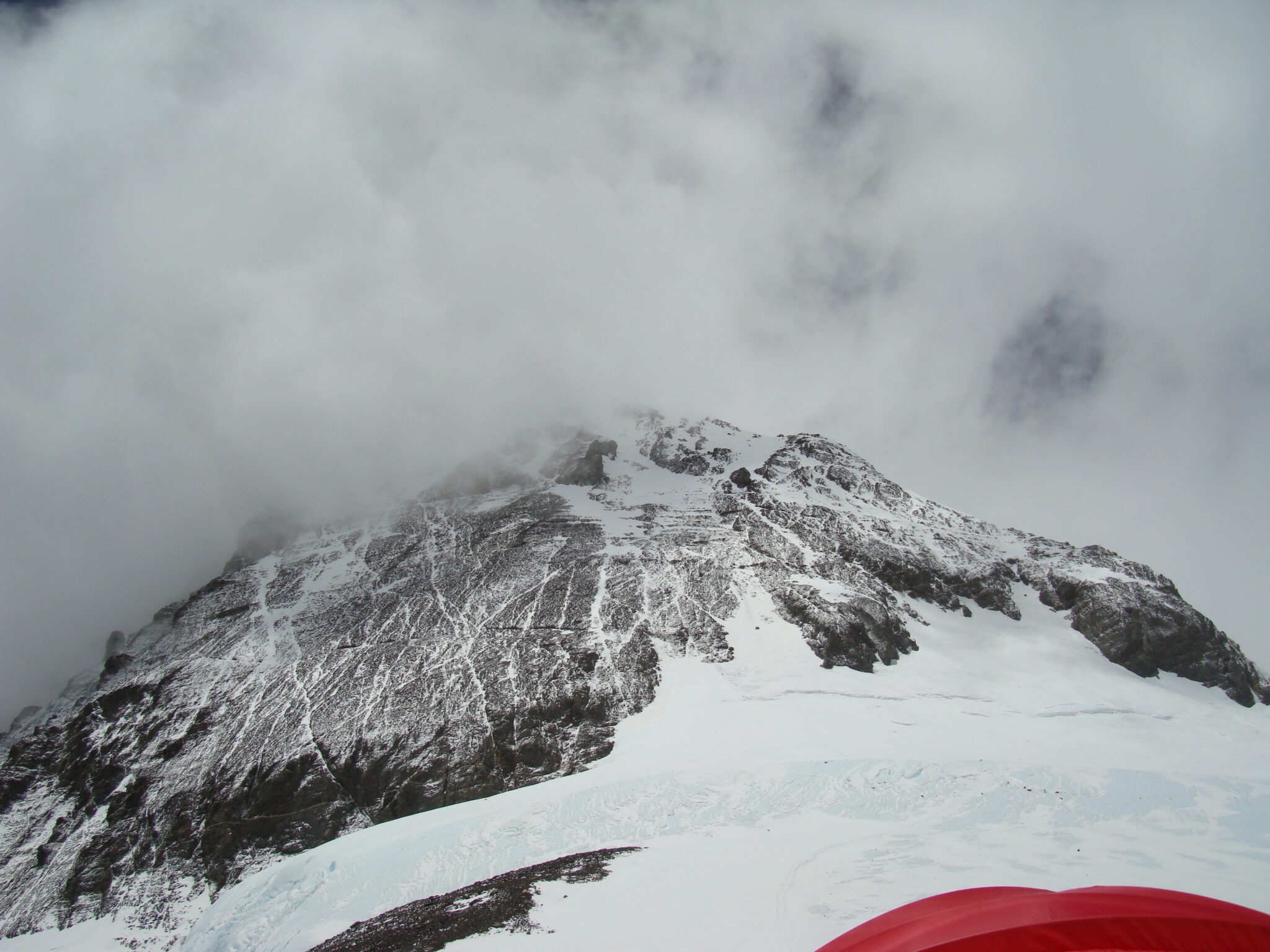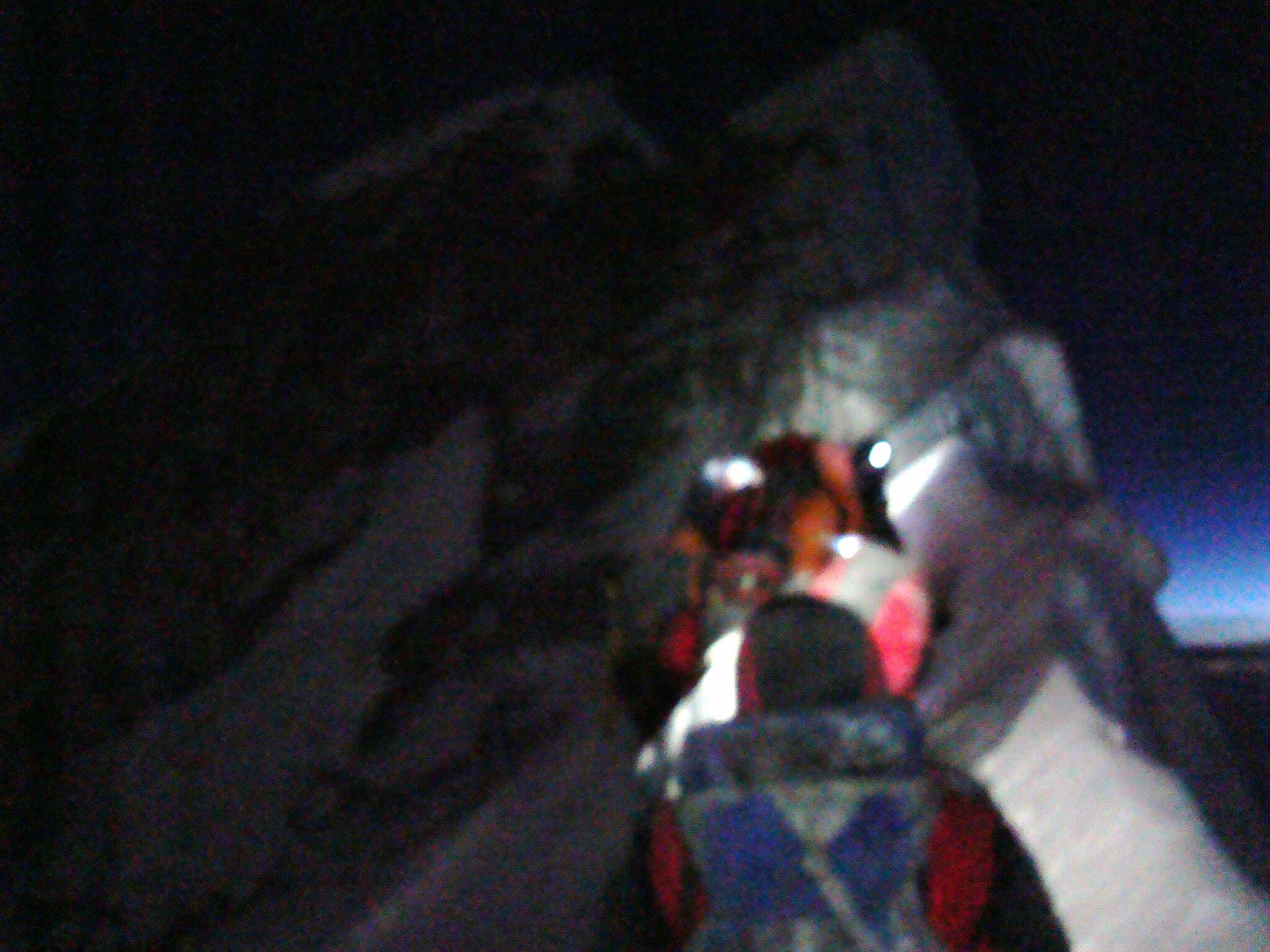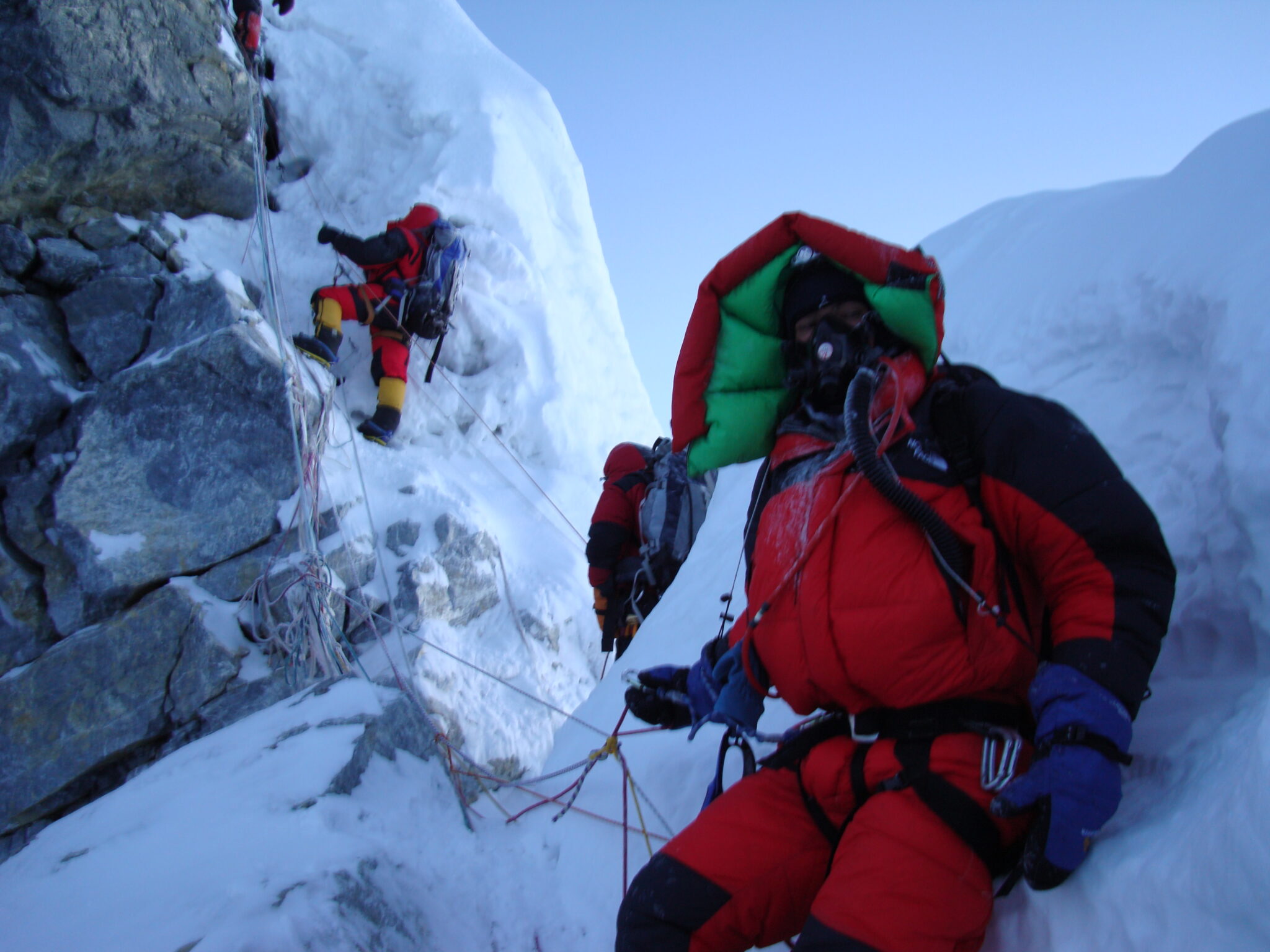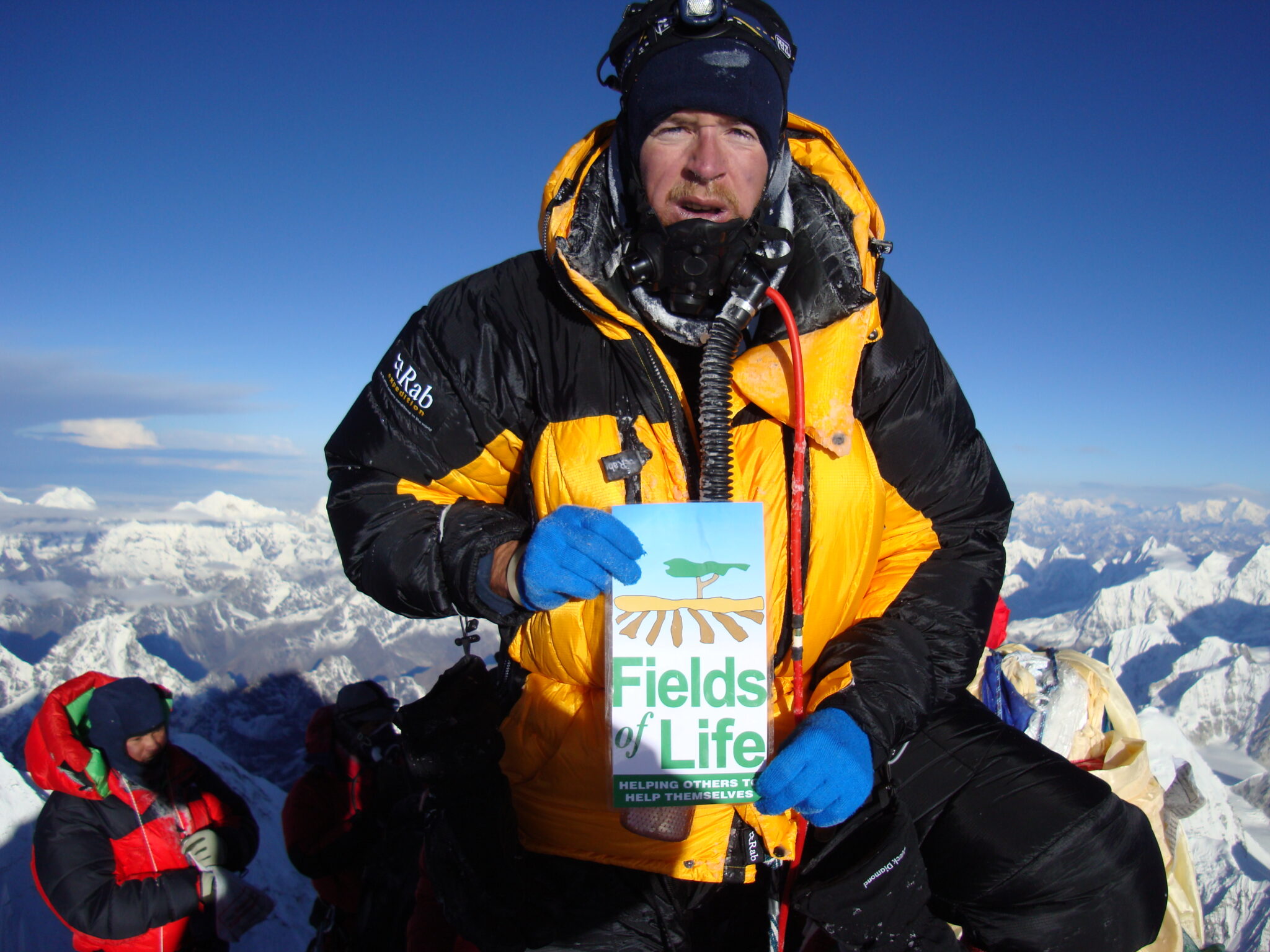Death on Mount Everest
Trek to Everest Base Camp
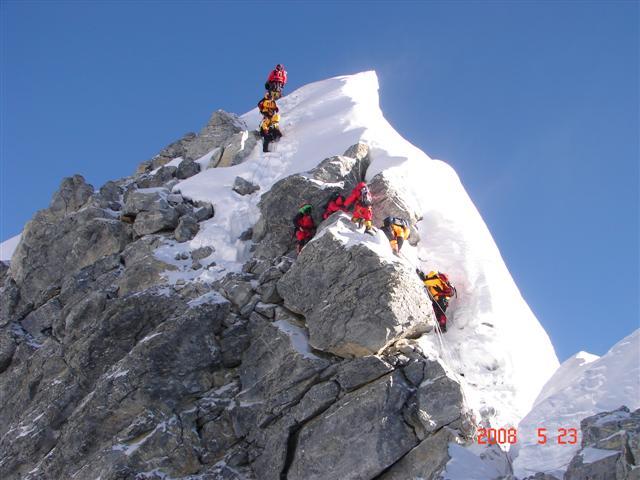
The Hillary Step
Acclimatization is Key to Success
Three years of my life have been spent preparing physically and mentally for this challenge. I spent an additional 8 weeks living in the Himalayas. We had 5 rotations climbing up and down Mount Everest, each time moving higher on the mountain. I fully understand that acclimatizing to the low levels of oxygen in the environment is critical to safety and success. This extra time would make all the difference in my chance at reaching the summit.
I have applied this learning to all the treks we run around the world. Climbing above 5,500m/ 18,000 feet comes at a major risks and you move into extreme altitude. I had always struggled on big mountains before Everest because we would always cut days out of our acclimatization schedule. The most important thing I learned on Everest was having more days of acclimatization. Having more acclimatization lower down the trail set me up for success. More time creating red blood cells gave me a much safer experience. This continues to be a guiding philosophy as I lead treks and expeditions around the world.
Sitting at Camp 4 on Mount Everest
It was the 22nd May 2008. We had 10 hours sitting and resting in camp four at 7,950m/ 26,082 feet. I was ready to take off into the higher realm of the death zone. We are trying to eat and drink whatever our stomachs can handle; water, hot chocolate, nuts, chocolate, and sweets, as well as mentally readying ourselves for this venture into the dark. As I laid in the tent, I began to think about the next 24 hours of my life. I couldn’t help but think about how everything we had done over the past three years had lead to this point. The plans for the rest of my life rest in such a short period of time.
Climbing High on Mount Everest
Our goal had been to climb four mountains on four continents in one year to build the Mount Everest Primary school in Uganda with the Irish charity Fields of Life. I had failed at many things throughout my life and this was my chance to do something big. Something that would not only be for myself, but something that would eventually help others. All of these factors motivated me to keeping moving and push for the top. We set out that night at 10pm, walking across Everest’s South Col in the dark. I was accompanied by my Sherpa, Pemba Chirri Sherpa. He was climbing behind me, driving me forward at key points on the climb.
How Much Does the Oxygen Help?
It was – 5 degrees Fahrenheit when we started moving up. I felt cold with a light wind from the side, as we began our journey up the first leg of the summit push to the Balcony at 8,400m. Each step was difficult, and catching your breath at these altitudes can seem impossible at times. I was using supplemental oxygen, however to the surprise of many, you are actually only increasing your oxygen flow by 2%.
The canister of oxygen is a mixture of compressed gas and ambient air. The gas only helps to keep you alive. Oxygen tanks do not improve your climbing ability high on Mount Everest. When you are in a dangerous environment and under extreme pressure, your mind can turn negative. You begin thinking of things that can possibly go wrong. It becomes very important to block those thoughts out and stay focused on the job at hand.
Managing Heart Rates and Pace is Critical
There are a hundred things that can kill you on Mount Everest. You can control some of the factors. My key focus was on the present and focusing in on each step. I had trained to try and keep that intense focus in my training. I also had to make sure I was using the right ropes, pacing myself and keeping my heart rate at a level that I could maintain. Performing for 12+ hours, using only enough energy to safely make the summit and return back down to camp 4 and base camp. The best climbers are the most relaxed. Being in control of my breathing, heart rate and movement were key to my safety.
The Right Mind Set is so Important
On the way up to the balcony, I was thinking about the body we were told we would have to pass or step over. Remembering to stay relaxed and in control is hard work. I remember thinking I didn’t want to end up dead on the mountain. The last three Irish people who tried to climb Everest before me, all nearly lost their lives high on this mountain. But I had to remain focused, keep to the routine of taking three steps and then ten breaths, again and again in the dark. Trying to stay focused on each step and to keep moving forward hour after hour. Beyond the Balcony, the wind started to pick up. I was stopped in my tracks as the wind was swirling snow up in my face and had to decide to keep moving.
Should I Keep Going Higher
I was using my hands to cover my eyes and face as the wind was strong. At that point I wanted to turn around; I was reminded of the high winds and storm that hit in 1996. Eleven people died in one day on Mount Everest. I really didn’t want to get caught out, high on this mountain. It was time to get on the radio and called above to assess conditions. Hearing the winds are lower higher up, I decided to move forward. The wind died down just enough to help me make the decision to move forward. As we were still in the dark, I could see electrical storms well below me in China. I could see six head torches above me and no other climbers behind me. The sense of feeling alone came over me, wanting so much to get closer to the climbers above.
I knew Martin, a Scottish climber and James an English climber were above me. It was time to get up there and relieve the feelings of being alone on the mountain. Every step was hard work, hour after hour, step by step, pushing slowly forward. About four hours later, I reached the South Summit of Everest and sat alone in the dark, sipping some water. I was tired, my left leg was a little sore, my back was sore. As I got up to sort out my back pack and start moving again there was a dim light on the horizon.
Almost Being Killed on the Knife Edge Ridge
I stepped off the back of the South Summit of Mount Everest. Standing at 8,750m/ 28,707 feet I needed to stay focused. There is an 8,000 foot drop of to your left and 10,000 foot drop to your right. I had a half a metre wide ridge to cross. Thirty people had lost their lives on this section on the climb. As I looked up there was a climber standing close to the edge on a section known as the Knife Edge Ridge. My Sherpa behind me began to shout stop, stop’ and the climber yelled back – it’s Martin, ‘I,m Blind’.
Extreme Altitude can Kill
Martin had lost his sight due to a lack of oxygen and couldn’t see what he was doing. It was a terrifying situation; if Martin fell he could pull us all off the mountain. The Sherpa Climber kept shouting over my shoulder for Martin to stop and wait. Due to the lack of oxygen at this altitude, we could not run over to help him quickly, we could only slowly move to his aide. My concern was we were all on the same rope. If Martin falls we all fall. If the rope breaks we are dead.
At 8,750m above sea level on a half meter wide ridge with a 10,000 foot drop to your right and an 8,000 foot drop to your left this is a dangerous place to be. Martin’s life was on the line at this point. We got closer to him and he nearly stepped off the ridge. I grabbed him and placed his foot back on the route. After maybe 3 minutes we managed to man-oeuvre Martin around us and on his way back to the South Summit. We moved him safely was to the South Summit. From there his Climbing Sherpa Tsering helped Martin all the way back to the Balcony.
So Close to the Summit
Eventually the Sherpa and Martin slowly made their way back to the Balcony where he regained part of his vision. Once he descended back to the South Col, he regained his eyesight. At point in time I didn’t know if Martin would survive. I was scared, and had to get off this ridge as quickly as possible. Facing my fears in a very real and dangerous way pushed me right to the limit. Fear almost got the better of me on numerous occasions as I made my way to the Hillary Step.
Moving forward towards the Hillary Step I broke down. I was so afraid. Thinking if I go higher and lose my sight I might not make it back down. I began crying and found it hard to find a positive thought in my mind. My Sherpa tried to keep me positive and focused on the fact that I was strong. Physically I was feeling good and that was enough to reset my mind and move forward. I continued on and climbed the Hillary Step, pushing myself the final thirty-five minutes to the summit.
The Summit in Sight
After climbing up the Hillary Step the ground was easier to cover. Seeing the summit in the distance for the first time was enough to make that final push. There were a few other climbers standing around so I took off my backpack and stepped up on the summit. Th summit was a twenty foot long ridge and two feet wide. I took out my Irish flag, Fields of Life Logo and other company logo’s. I handed my video camera’s to my Sherpa and snapped a few pictures on the summit, before I was ready to get the hell out of there.
Extreme Focus
I was more mentally exhausted than I had ever been. Knowing that 80% off accidents happen on the way down. Staying alert was on my mind every minute. Moving down the side of Mount Everest was hard work. Slowly, I kept moving down, back to Camp Four. My body and mind had performed well, my gear also held up to the rigors of climbing high on Everest. My Rab down gear, Patagonia, Berghaus and Merino layers all held firm. I was super lucky with my Everest Millet boots, they saved my feet from frostbite. I was worried about my Black Diamond guide gloves, because the extreme cold could be an issue. There was no problem and they performed perfectly high on the mountain.
Getting to the Top in Good Time
After eight hours up to the summit and four hours back down, I reached Camp Four. With a release of emotion, I embraced my Sherpa, embraced Graham and Martin and cried. Happy to be alive is an under statement. I had pushed myself past my fears and reached the top of the world. It was time to rest and refuel for the night before we would have to move two more days to get back to Everest Base Camp and then make the journey back home. After some rest I wondered around the South Col that afternoon. I wanted to see a little more of the historic place and possibly find items left from the 1953 Expedition.
Looking Back 10 Years Later
It was a long and hard road to stand on the summit of Mount Everest. When I think about the journey I learned that ‘Vision Drives Activity’. We had a vision, a mission to climb four mountains on four continents in one year. Raising enough money to help build the Mount Everest school in Uganda was almost as hard as the climb. Seeing the people of Kitandwe, Uganda with a 7 room school was the most rewarding part of the journey. Ten years on the school is thriving. They teachers accommodation, a community well for clean water and hope for their children. We have a child sponsorship program in place at the school. We worked with the charity Fields of Life and they did an amazing job at the Mount Everest Primary school.
My Sherpa friends in Nepal are now family and help us run over 40+ trips a year now across Nepal. We have developed a team of world class climbing Sherpa’s who work with our teams throughout the year. We are running trips in 6 different regions of Nepal with great success. I have been lucky enough to climb numerous peaks in the Everest region and led 35+ treks to the Base of Mount Everest.
Fields of Life
10 years on from standing on the summit of Mount Everest, I am the president of Fields of Life USA. The Mount Everest school has been a great success story but large challenges remain. We have large targets and challenges as we try to bring millions of people clean water in East Africa. I am passionate about the work of FOL they work with very strict administration overheads to deliver quality education, water and basic needs for so many people. The current refugee crisis in south Sudan which has spread into Northern Uganda is a real challenge. This is an urgent crisis that needs to be addressed as hundreds of thousands of lives are at risk.
Nepal Earthquake 2015
On April 25th 2015 I was in Kathmandu when the 7.8 earthquake hit the Kathmandu valley and beyond. 10,000 people lost their lives in a very short period of time. I had just some back down from leading an Everest Base Camp Trek and successful Island peak climb. This experience was horrific for the people of Nepal and I hope they do not have to endure in the near future. Along with our full time staff on the ground in Nepal we established the Goli Village trust and we have built our first school. $10,000 is needed to finish the second school, and plans for more. Kay Allan Sherpa is working hard to bring stoves to hundreds of homes in the remote region of Goli. We will continue to support this region of Nepal over the coming decade. If you would like to get involved and help let us know.
Professional Everest Speaker
I have been lucky enough to speak around the world about Climbing Mount Everest and raising funds for the work of Fields of Life. I continue to push the work of Fields of Life. There are always children who are need support at our school so if you would like to sponsor a child at the Mount Everest school get in touch today. Read some REVIEWS from our trips and think about hiring me to speak at your upcoming event.
Our Mount Everest DVD
Before Climbing Everest
Contact us
You can follow us on Facebook, Twitter and Instagram. You can also CONTACT US 5 days a week if you are interested in trekking or climbing around the world or interested in support the Mt. Everest primary school, Orphanage in Tanzania or projects in Nepal.


